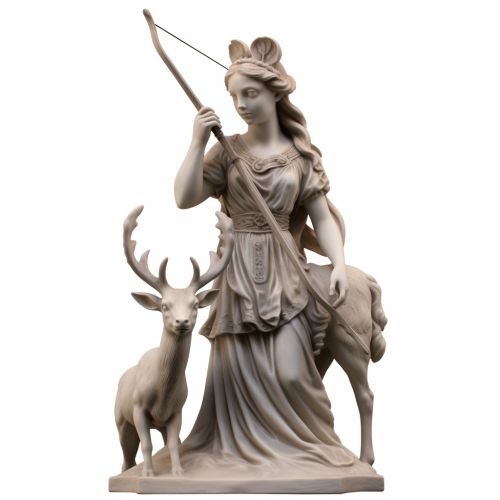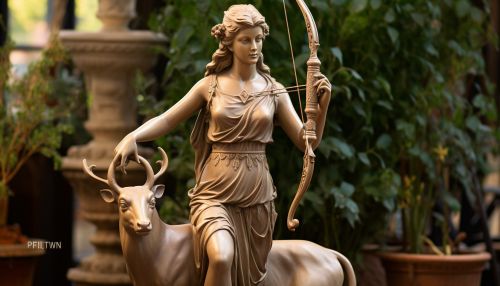Artemis
Overview
Artemis is the ancient Greek goddess associated with wild animals, the hunt, vegetation, chastity, and childbirth. She was the daughter of Zeus, the king of the gods, and the Titaness Leto, and the twin sister of Apollo, the god of music, truth, healing, and the sun. Artemis was one of the most widely venerated of the Ancient Greek deities and her temple at Ephesus was one of the Seven Wonders of the Ancient World.
Mythology
Artemis was born on the island of Ortygia, which would later be called Delos. According to the Homeric Hymn to Artemis, she was born a day before her brother Apollo. She helped her mother in the delivery of Apollo, which is why she became the protector of childbirth and labor.
Artemis was a virgin goddess, and the ancient Greeks believed she assisted women in childbirth but also brought them death and sickness. She was often depicted as a huntress carrying a bow and arrows. The deer and the cypress were sacred to her.
Worship and Cult
Artemis was widely worshipped throughout Greece but was particularly revered in Arcadia, where she was considered the patron goddess. The Temple of Artemis at Ephesus, one of the Seven Wonders of the Ancient World, was the largest of her temples and contained a statue of the goddess made of gold and ivory.
Artemis was also worshipped as one of the primary goddesses of childbirth and midwifery along with Eileithyia. Rituals associated with her cult often involved dances, processions, and offerings of food. Young girls, before they were married, were sent to the sanctuary of Artemis to serve the Goddess for one year.
Iconography
In art and literature, Artemis is often depicted as a huntress with a bow and arrows. She is usually accompanied by a deer or a hunting dog. She is often portrayed as a beautiful and vigorous maiden, with her robe tucked up to her knees, ready for the hunt or battle.


